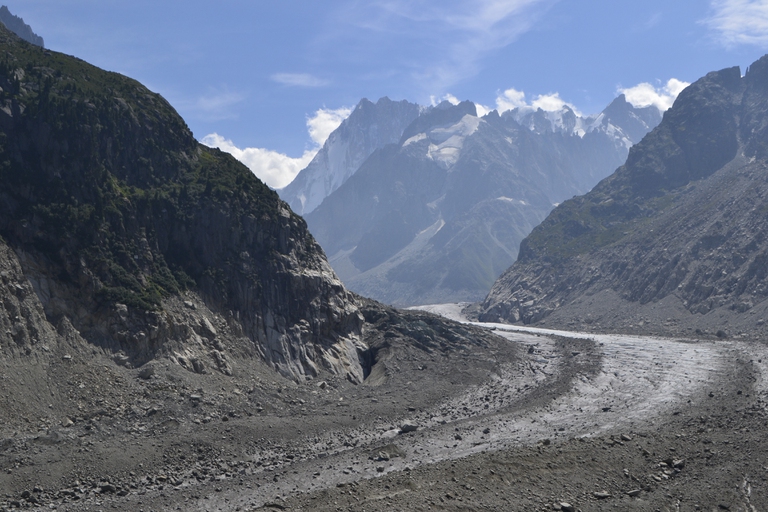
The 26th edition of the United Nations Climate Change Conference, COP26, will be held in Glasgow, Scotland in November 2020. The pre-COP will take place in Milan, Italy.
Secondo uno studio inglese, le emissioni di CO2 potrebbero scendere dello 0,6 per cento nel 2015. I livelli, però, restano ancora troppo alti.
Carbon dioxide (CO2) emissions stabilised across 2014 globally. This year, they are likely to slightly decrease, by around 0.6%. This is what has emerged from a study published by the scientific magazine Nature Climate Change, which underlines this is the first time that a decrease is registered during a period of economic growth (GDP has increased by 3.4% globally last year and is likely to reach 3.1% by the end of 2015).
The news has been released on Monday 7 December, the day the second week of COP21 talks has begun. Nevertheless, the study carried out by 70 researchers – coordinated by Corinne Le Quere of the University of East Anglia – has not to be read with great optimism.
The research indeed shows that 2015 will be not remembered as the year CO2 emissions have peaked and then followed by a steady decrease on the long run. On the contrary, according to The Guardian, Le Quere warned that “Rapid growth in emissions in other emerging countries dependent on coal means that emissions are likely to go upward again in a few years”.
In other words, even if emissions peak soon, total levels will be still high for a long time. Moreover, once dispersed, CO2 remains in the atmosphere for decades: this explains how far we are from a definitive solution. It’s interesting to notice that the slight decrease registered in 2015 is partly due to a decrease in coal consumption in China. This confirms two facts: first, coal is the number one enemy of the environment; second, without a proper energy transition in Asia and India the objective (limit the global average temperature rise to 2°C) set by COP21 participants will be difficult to be achieved by the end of the century.
Today, about 300 million people lack access to electricity in India. The country’s economic growth will probably lead to a decrease in such figure, resulting in a social progress. However, as for the environment, it is still not clear how the government of New Delhi will provide the population with a universal energy supply, if through renewables or coal and nuclear.
In Paris, India’s position was pretty much unclear: on the one hand, the government has launched an historic Solar Alliance (with the participation of over 100 countries located between the Tropic of Cancer and the Tropic of Capricorn); on the other hand, according to NGO observers at COP21, India would have vetoed the use of the word “decarbonisation” in the draft agreement.
Siamo anche su WhatsApp. Segui il canale ufficiale LifeGate per restare aggiornata, aggiornato sulle ultime notizie e sulle nostre attività.
![]()
Quest'opera è distribuita con Licenza Creative Commons Attribuzione - Non commerciale - Non opere derivate 4.0 Internazionale.
The 26th edition of the United Nations Climate Change Conference, COP26, will be held in Glasgow, Scotland in November 2020. The pre-COP will take place in Milan, Italy.
Thanks to activists, the voice of the world’s peoples resounded through the COP25 like an alarm bell. Governments didn’t reach the results they demanded, but their cries and messages were stronger than ever, reaching even those who weren’t in Madrid.
Climate change poses a risk for millions. However, women are the most vulnerable to its negative consequences: a few simple considerations by the Italian Climate Network help us perceive the global implications of this.
The COP25 ended two days late and with very few steps ahead made. Climate negotiations in 2020 will be an uphill battle as political will clearly seems to be lacking, once again.
The last ten years have been the most “exceptional” and hottest decade ever, with extreme weather hitting people and ecosystems harder and more frequently. 2019 is also on course to becoming the second or third hottest year since records began.
Unite Behind the Science: this was the title of the conference held at the COP25 on 10 December. Greta Thunberg’s presence filled the arena, but this time it was scientists’ turn to speak.
25,000 delegates meet for the COP25 from 2 to 13 December. What can we hope this UN climate change conference, whose venue was changed from Santiago de Chile to Madrid, will achieve?
100 eminent people from all over the world, including Vandana Shiva, Naomi Klein and Noam Chomsky, have signed an open letter after the disappointing results of the COP24. A call-to-arms for climate against world leaders’ indifference.
The outcome of the COP24 in Katowice left many unsatisfied. Greta Thunberg, a young Swedish environmental activist, gave a harsh, heartfelt speech addressing world leaders.









